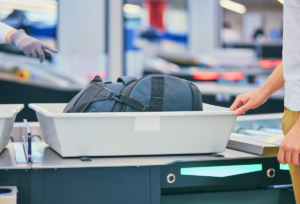Blue United Kingdom passports are making a comeback. It could be time to ditch all that burgundy travel kit you bought to match your British passport, as post-Brexit Brits might be in for some more change. At the urging of MP Julian Knight, there have been recent calls for the UK to change its passport covers back to their original navy blue, after they were shifted to burgundy to match the rest of Europe in 1988.
This proposed shift comes shortly after the UK voted to leave the European Union. It’s thought that reverting to the old navy blue covers will be a symbol of the nation’s independence, though it’s worth noting that Great Britain would only be joining the sea of navy blue passports, currently inhabited by nations such as the United States and Canada. But so far, it’s all talk. The Home Office has only admitted to ‘considering’ the change.
Out with the old, in with the older
Blue British passports were first introduced in 1921, their design described by the League of Nations as ‘perfection’. They featured the same royal coat of arms on current passports, but also had windows for the passport holder’s name and passport number on the front. People travelling as a family could also just travel under a single passport, though reintroducing this notion in today’s travel world would be hard to imagine and probably unlikely.
It was in 1981 that the higher-ups in Brussels called for a unification of passport covers across European nations, but it wasn’t until 1988 that the UK finally succumbed to the pressure, as they were ultimately the last to join. Gone were the days of navy blue and in came a deep burgundy colour, leaving the last blue passport to only expire in 2003.
Change is afoot
These proposed changes would immediately follow the transition to e-passports. Beginning in April, it became required for all those travelling to the United States to hold an e-passport, which meant each passport cover needed to have a small, camera-looking symbol on the front. This was intended to help border control agents more easily identify fraudulent documents.
However, e-passports weren’t introduced until October 2006, and this new law came into effect on April 1st. This means that all passports issued between April 2006 to October 2006 were technically valid, though not permissible when travelling to the United States, affecting an estimated 1.3 million travellers.
This new change would bring yet another shift to passport appearances, though a shift in colour would most likely not affect the passport’s validity.
What this means for travellers
But what does it all mean? The short answer is – nothing yet. In theory, changing the design would be simple and inexpensive, and, as we speculated earlier, most likely wouldn’t affect a blue passport’s validity.
As of this moment, it’s all just chocked up to whispers. There’s only one thing for sure – these new passports will inevitably be without the words ‘European Union’ emblazoned across the top.
What would your new design for the UK passport look like? Let us know in the comments below.




